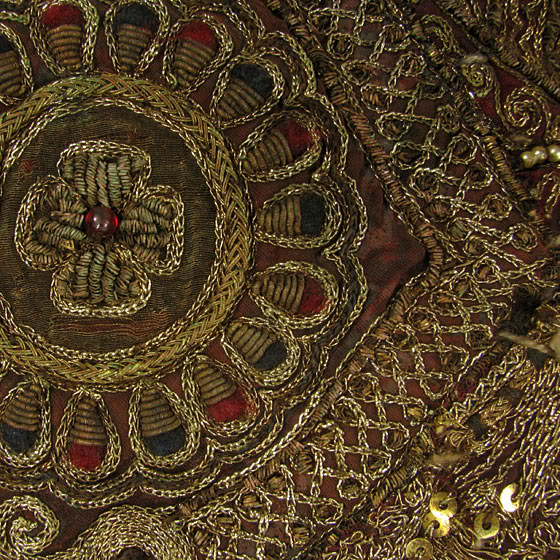===
0760,
1
===

=== |
 |
niqaab : 'A veil, hood, or covering (for the face)'. (Platts p.1145)
pardah : 'A curtain, screen, cover, veil, anything which acts as a screen, a wall, hangings, tapestry; ... secrecy, privacy, modesty; seclusion, concealment; secret, mystery, reticence, reserve; screen, shelter, pretext, pretence'. (Platts p.246)
;hijaab : 'A veil; a curtain; —concealment; —modesty, bashfulness, shame'. (Platts p.474)
FWP:
SETS == KYA; MIDPOINTS
MOTIFS == VEIL
NAMES
TERMS == INSHA'IYAHSince SRF finds not a word to say about this verse, it's a good occasion to notice how vaguely and generally both niqaab and ;hijaab are used; they don't seem here to refer to specific garments (in the way that they're sometimes used nowadays). The complex, multivalent key word is of course pardah , with its range of meanings that goes well beyond those of any garment and includes the abstract ('secret, mystery') and even the duplicitous ('pretext, pretence') (see the definition above).
The 'midpoint' positioning of ham se makes it readable either as part of the first clause, or as part of the second. No doubt the general meaning isn't very different in either case, but the balance and structure of the second line are certainly much affected by which choice is made. And since the whole verse is so insha'iyah, consisting as it does of three questions, to rebalance its rhetorical structure is to make a significant change.
Above all, there's the question of tone. A minimal little sentence like 'What is this...?!' can really be read in an extraordinary range of tones, thanks almost entirely to the multivalent rhetorical possibilities of kyaa (which occurs twice, accompanied by its junior cousin kaun saa ). The speaker might be indignant ('What an insult, for her to treat me like this!'). He might be dismayed or suspicious ('Uh oh, why is she treating me like this?'). He might be despairing ('Keeping me at a distance, as usual'). He might be amused ('What a cute little show of modesty!'). He might be snide ('Ha! It's a little late in our relationship for that kind of thing!'). Or he might even be genuinely puzzled ('Why in the world is she acting like this?').
Since there's literally nothing else going on in the verse, the question of tone, as enabled by the 'kya effect, assumes a decisive role in how the verse creates any effect at all. Try reciting the versewithout giving it a tone, and you'll see that it really can't be done. And whatever tone you choose to give it, can you provide any evidence that that's the 'right' tone? As so often, we're invited-- not to say compelled-- to invent a lot of the verse for ourselves. I doubt that Ghalib learned tricks of this kind from Mir; I doubt if he needed to learn them from anybody. But if he had needed to learn them from anybody, he wouldn't have had to look any farther than Mir.
And all this in a verse so minor that SRF has not a word to say about it! It shows you what can be done by an Ustad with simple and basic tools, even when he isn't operating at anything like his real highest power.